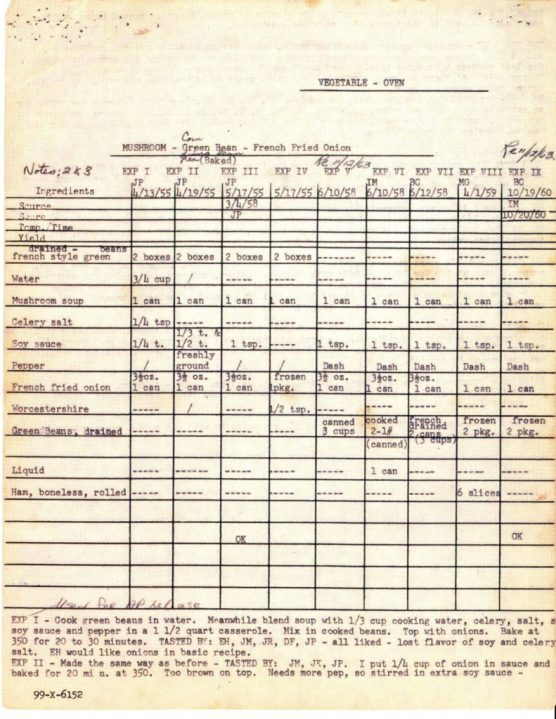(Nexstar) — The Thanksgiving dinner table is a party full of unlikely foods that only seem to hang out on the 4th Thursday of November. For some people, it’s not clear why they were all invited in the first place.
The main dish is fairly straightforward, turkey, but once you get into the sides things get a little … weird. How did green bean casserole come to be? Who thought the Thanksgiving meal was just a canned log of cranberry jelly away from perfection? And how did all those marshmallows end up on the sweet potatoes?
Sweet potato casserole
Sweet potato recipes in the U.S. date back as far as 1796, when Amelia Simmons featured the root vegetable in cookbook American Cookery, according to The Smithsonian. A puffy blanket of marshmallows would not become the go-to sweet potato topper for over a century, however.
The creation of the marshmallow-laden sweet potato casserole can be traced back to a manufacturer of the sweets who contracted Boston Cooking School Magazine founder Janet McKenzie Hill to create a recipe book that would place marshmallows in the pantries of people across the country.
The cookbook, which also included the classic hot cocoa and marshmallows, was a hit. The next time you bite into a sweet potato casserole, you have Janet McKenzie Hill’s “War Time Recipes” to thank.
Green bean casserole
This Thanksgiving classic has one woman to thank for its existence, Dorcas Reilly. Reilly was working for the Campbell Soup Company in Camden, New Jersey as one of the first full-time members of a department now called the Campbell Test Kitchen. Back in 1955, it was the Campbell’s Home Economics Department.

The popularity of green bean casserole doesn’t come from its complexity – the recipe calls for canned cream of mushroom soup, canned or fresh green beans, soy sauce, black pepper, milk and French-fried onions.
Reilly later said in several interviews that she didn’t remember what led her to the ingredients in the iconic Thanksgiving side dish, according to History.com. Cream of mushroom soup was so popular in Midwest kitchens as a casserole filler that it has been referred to as the “Lutheran binder,” but the frozen green beans were all Reilly’s.
Originally named “Green Bean Bake,” the recipe for Reilly’s beloved concoction is viewed roughly 4 million times every Thanksgiving Day, according to Campbell’s. The original recipe card is now on display in the National Inventor’s Hall of Fame in Akron, Ohio.
Canned cranberry jelly
Cranberry jelly is often mentioned in the same breath as turkey and stuffing when describing Thanksgiving staples, but how did this side dish elbow its way to a prime location on the table? It certainly wasn’t for the aesthetic appeal – this jellied turkey companion often slurps its way out of a can and onto a serving dish as a wobbly, ridged replica of its container.

It turns out that the canned variety – used by roughly 75 percent of Americans, as opposed to a homemade sauce – was born partly out of necessity. Cranberries, which were used by Native Americans for cooking, hunting bait, medicinal purposes and as a dye, had a small window of availability before canning at the beginning of the 20th Century. Cranberries were only available fresh for about two months out of the year leading up to Thanksgiving, from mid-September to mid-November, according to The Smithsonian.
In 1912, however, a lawyer named Marcus L. Urann gave up law to buy a cranberry bog and would go on to revolutionize cranberry products, and, by doing so, Thanksgiving as we know it. Urann was focused on expanding the cranberry market beyond a few weeks, so he set up a cooking facility at his Massachusetts packing house to create a sauce that could be canned and preserved for months on end.
He didn’t stop at innovative canning techniques and new products such as the cranberry juice cocktail and a syrup for mixed drinks, however, convincing his major competitors to join forces in 1930 as a cooperative, Cranberry Canners, Inc. After some legal maneuvering that allowed associations to dodge anti-trust laws, Urann’s vision would give rise to the national Cranberry Association in 1946, which would later become Ocean Spray in 1957.
Urann, who we can now thank for the iconic cranberry “log,” died in 1963.






